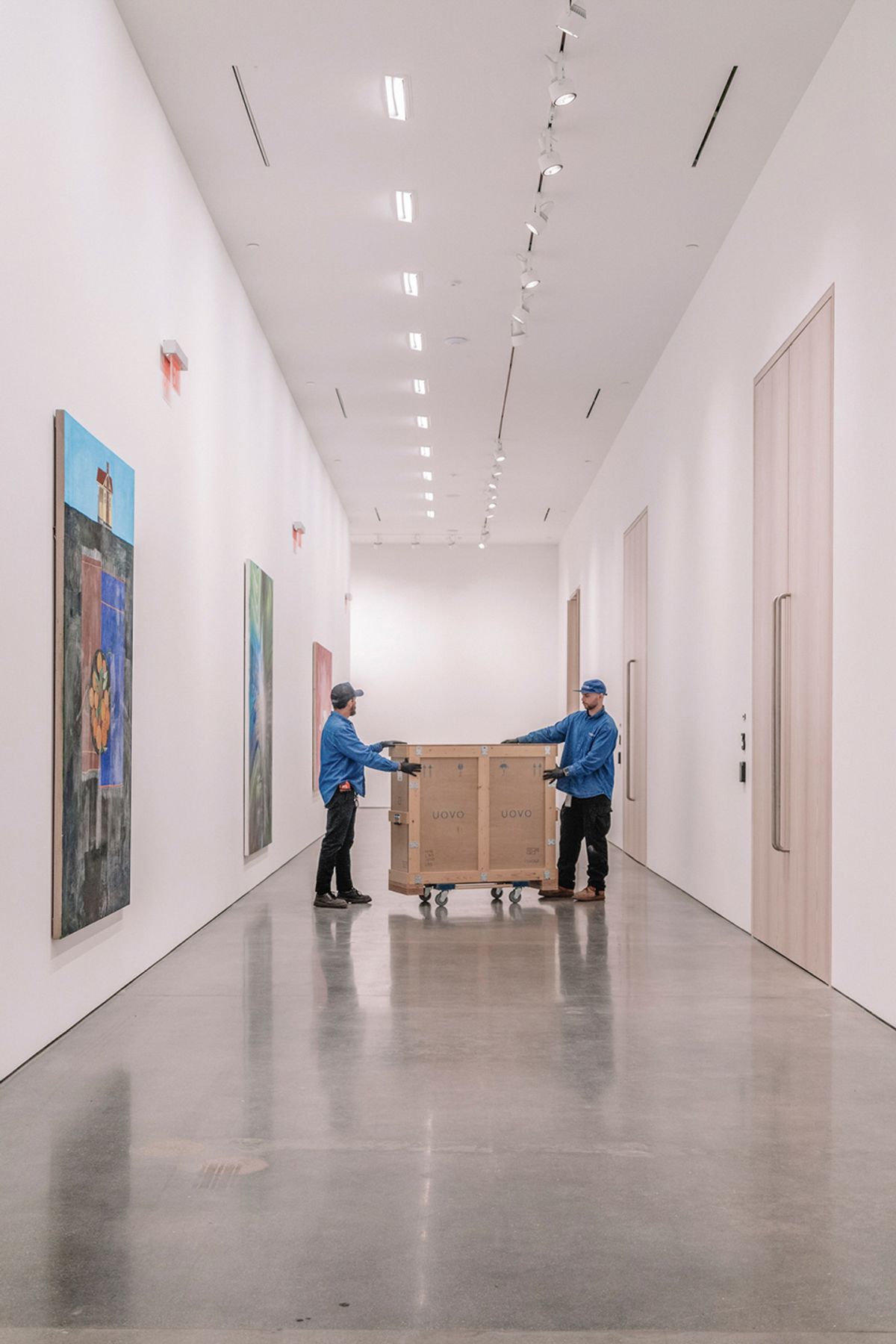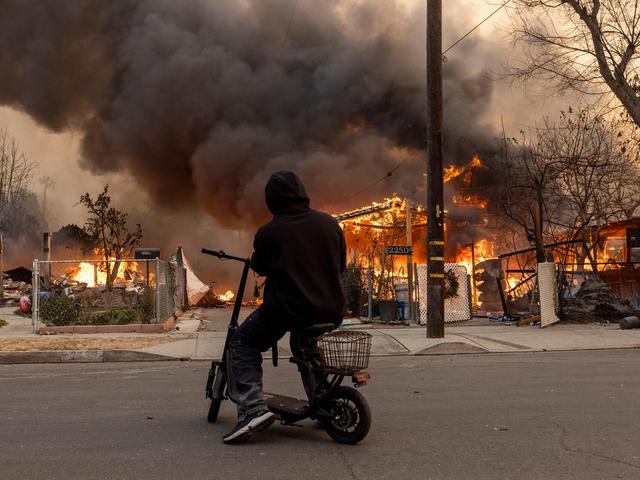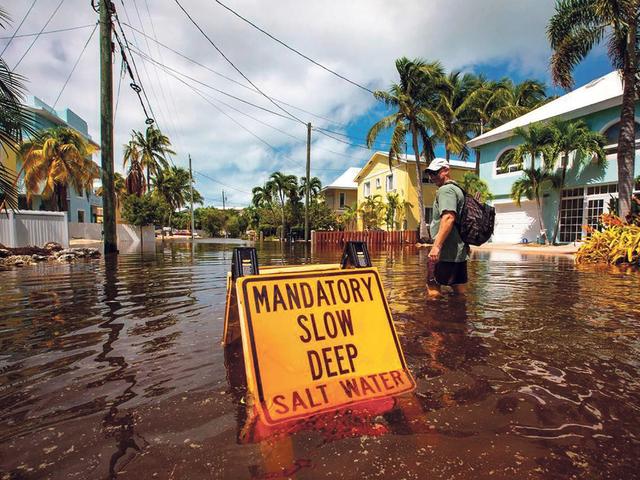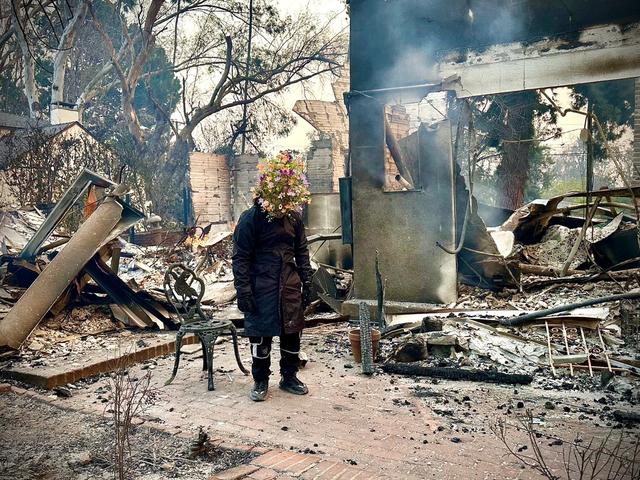The deadly wildfires that devastated parts of Los Angeles last month damaged and destroyed works of art in private homes, artists’ studios and a few art galleries, getting perilously close to several art museums. Perhaps the safest places for art were the city’s numerous fine art storage facilities, almost all of which are located in warehouse districts that were not landscaped with flammable shrubs and trees.
“We weren’t anywhere near harm’s way,” says Owen Rothstein, the owner of RW Holdart, an art storage facility in downtown Los Angeles, so everything stored at his site was safe. Power was not lost there, so all the museum-grade climate controls (70ºF, 50% relative humidity) and air filtration systems kept the contents in good condition.
Earthquakes, tsunami warnings, landslides and wildfires have become regular events on the West Coast, and Californians have become used to the alert levels issued by the Governor’s Office of Emergency Services: yellow (prepare to evacuate), red (the situation is particularly dangerous) and severe red (evacuate immediately). Rothstein says his company’s trucks evacuated art from clients in yellow zones, “but we couldn’t risk sending trucks into red zones”.
Crozier and Uovo, two of the largest fine art storage companies operating in Southern California, sent out emails to their clients offering to pick up artworks. Victoria Burns, a Los Angeles-based art adviser, says: “I know many collectors who were evacuated and opted not to save their art but, instead, were glued to the news and alerts, trying to decide what to do about saving their homes and property.”
Rothstein claims that, despite the rapidly changing conditions, his company’s clients took the yellow and red flag warnings seriously, contacting the storage facilities to have their art retrieved as soon as possible. “Some of our clients had evacuation plans for their art,” Rothstein says. “We had some clients who rented their own trucks, filling them with packing materials for our people to use when they arrived at their homes.”
Not every collector was as diligent. Irene C. Papanestor, a New York-based art adviser who works with a number of collectors in Los Angeles, says that while her clients in Florida regularly “move vulnerable and high-value pieces into storage prior to hurricane season”, some of her California-based collectors tend to view off-site storage as “a place to put artwork pending installation, a temporary parking spot for incoming or outgoing pieces”. As a result, one of her Los Angeles clients, when told to evacuate, simply “loaded art into the backseat and trunk of her car and transported it out of the city. By a stroke of good luck, and nothing to do with prudent planning”, nothing taken in her car or left behind in her house was damaged.
Time was of the essence. Caroline Page-Katz, the president and chief operating officer of the storage company Uovo, says that “during the first week of fires, we were fielding five to ten times the number of storage and transit requests”.
She adds that none of Uovo’s Southern California facilities have been impacted by the fires. For instance, its Los Angeles location is Downtown, away from the hills, and Uovo owns and develops its own properties. “The Los Angeles building is a concrete structure thoughtfully designed to withstand events like this,” she says. “The building has an on-site backup generator in the event of a power outage to maintain climate, security and all building management services. All of our air handlers are equipped with Merv-13 filtration and are recirculating air as opposed to pulling in outside air to ensure no smoke enters.”
Not every art storage facility has such systems, and many desperate collectors could not be picky. Frantic calls to find safe storage for valuable art have been widespread. Facilities in Palm Desert to the south-east of Los Angeles that offer storage services, including Melissa Morgan Fine Art and The Art Collective, have received calls from art owners wanting “to get their art out of Los Angeles”, according to Karna Valen, the general manager at Melissa Morgan.
Los Angeles Fine Art and Wine, a climate-controlled storage facility in the city’s Downtown area, does not own a fleet of trucks to retrieve objects from clients’ homes, requiring clients to bring items in themselves. It has seen a surge of items “brought in by people who were evacuated but could get their things out”, says Philip Salaiz, the company’s operations manager.
For some, it can all be too much. Nancy Chaikin, an art adviser in Santa Monica, says that “when you are told to evacuate, you leave. You don’t have time to organise and coordinate an art move.” Barbara Guggenheim, an adviser in Beverly Hills, says she has “clients who live in a canyon and decided six months ago that it’s too dangerous for their art and sent their whole collection to me to sell”.





